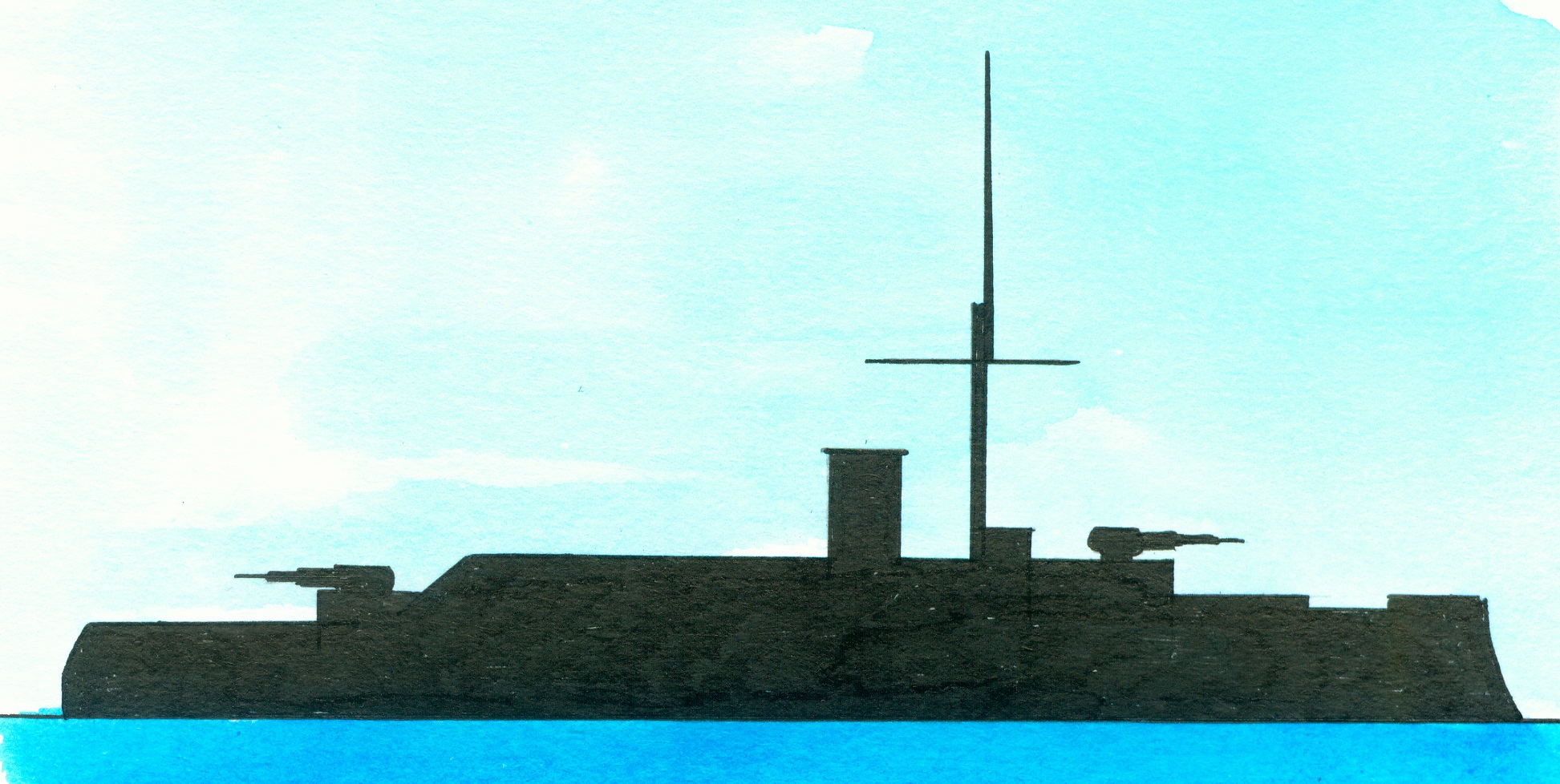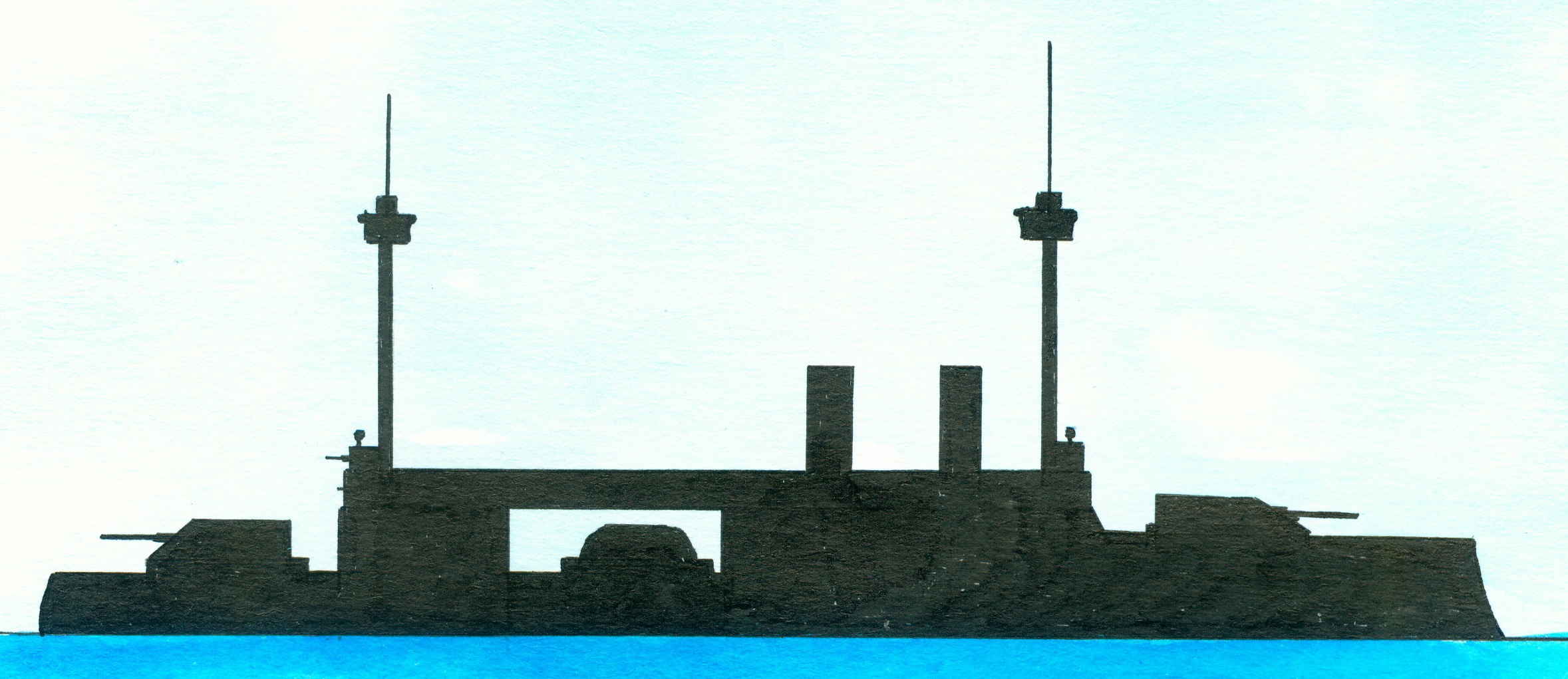Siegfried-class
Brandenburg-class
SMS Weissenburg
Kaiser Friedrich III-class
Of the Brandenburg-class consisting Brandenburg, Wörth, Kurfürst Friedrich Wilhelm and Weissenburg, succeeded by the Kaiser Friedrich III-class. This class was the first ocean-going German battleships succeeding the coastal defence ships of the Siegfried and Odin-classes. Vice admiral Alexander von Monts (1) and a team started late 1888 with designing the Brandenburg-class. Von Monts was also responsible for getting the building budget approved.
General technical class specifications. Displacement 10.013 (design)-10.670 (full combat load) tons and as dimensions 113,9 (waterline)-115,7 (over all) x 19,5-19,74 (with torpedo nets added) x 7,6 (fore)-7,7 (aft metres or 373.8”-379.7 x 64-64.9 x 24.11-25.11 feet. The hull was decided in 13 watertight compartments with over 47% of the hull a double bottom. Their crew numbered 568 (standard)- (flagship) 531 men. Two sets of 3-cylinder triple expansion steam engines and 12 transverse cylindrical boilers with a horsepower of 10.000 (design) and a speed of 16,5 (design) knots. Coal bunker capacity 650 (design)-1.050 (maximum) tons and a range of 4.300 nautical miles with a cruising speed of 10 knots. The armour consisted of a 40cm/16” thick belt, 6cm/2.4” thick deck, barbettes protected by 30cm/12” forward conning tower by 3cm/1.2“ (roof)-30cm/12“ (sides). The armament consisted of 3x2-28cm/11” guns (fore and aft KL/40, centre L/35), 7-10,5cm/4.1”L/35 quick firing guns in casemates (while modernized in 1902-1904 was an eight 10,5cm gun added), 8-8,8cn/3.45” L/30 quick firing guns in casemates and 6-45cm/18” torpedo tubes for which 16 torpedoes were carried with.
Note
1. Alexander Graf von Monts (9 August 1832-Berlin, Germany-19 January 1889 Berlin, Germany), started his naval career in the Prussian navy in 1849, later in the Imperial Navy ending his career in the rank of vice admiral, head of the admiralty.




